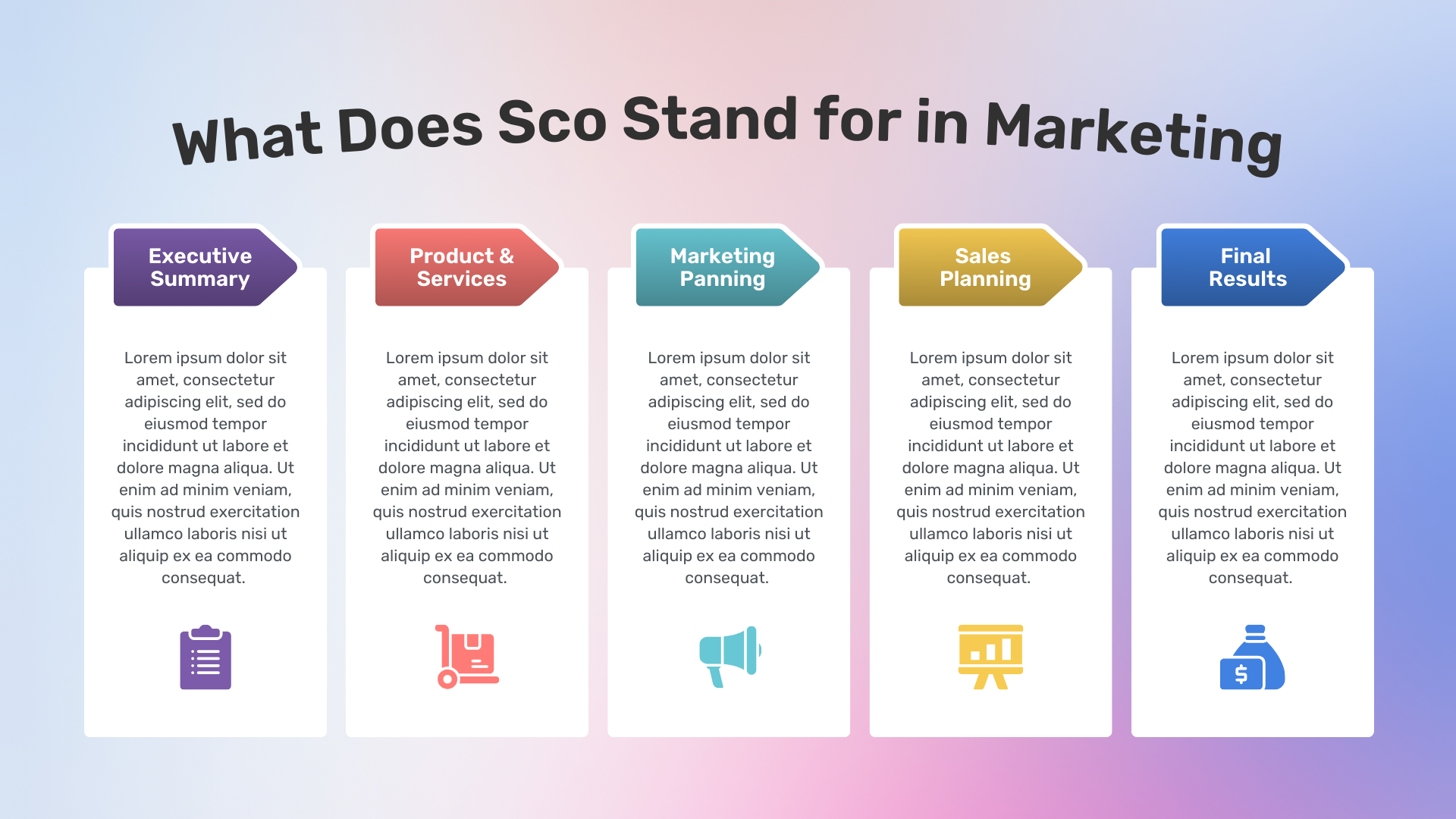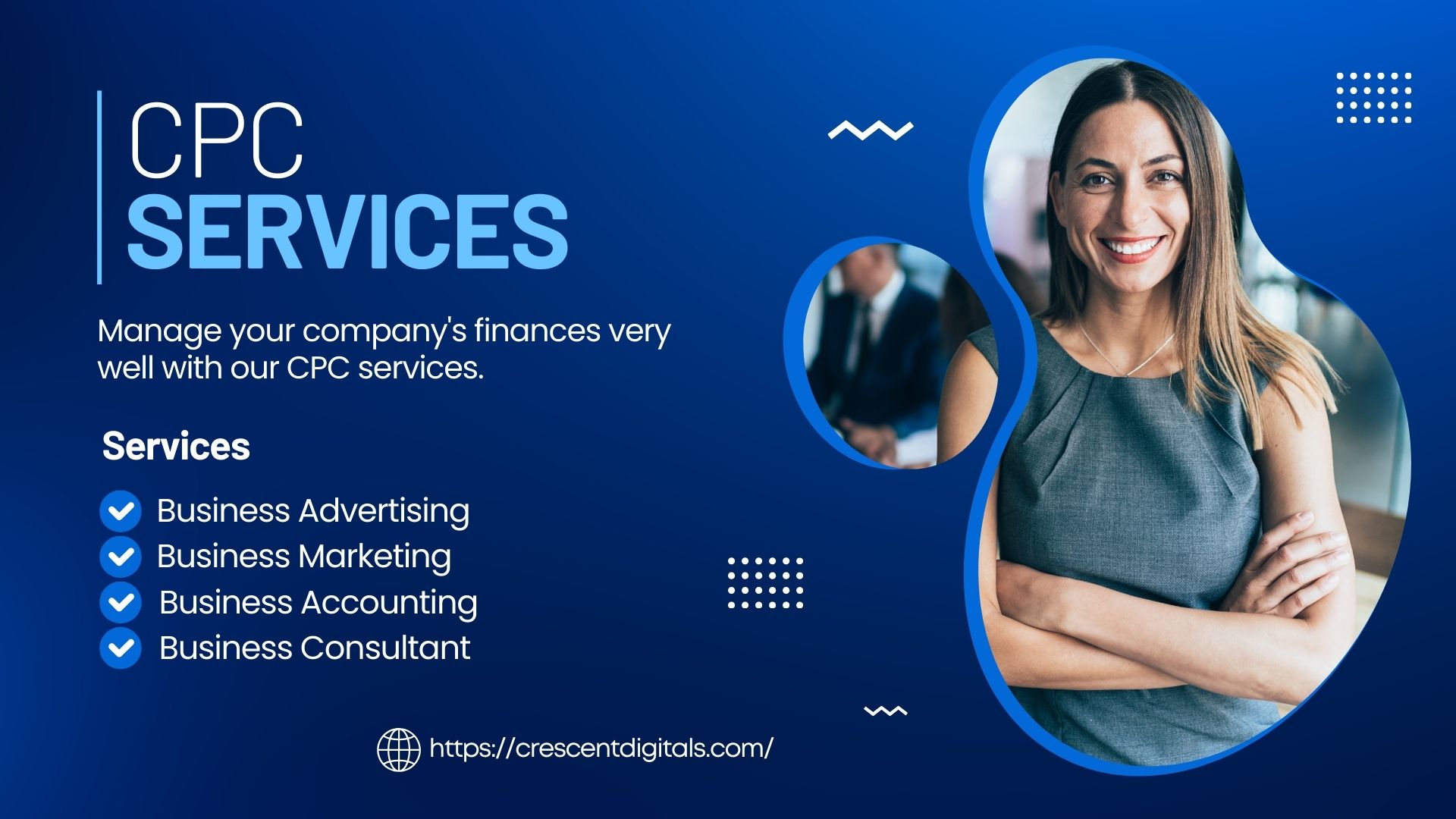What Does Sco Stand for in Marketing, SCO stands for Search Channel Optimization in marketing, which is a strategy aimed at improving a website’s visibility in search engine results pages (SERPs). This approach focuses on optimizing a website’s content, structure, and other factors to increase its ranking in search engine queries.
By implementing SCO, businesses can enhance their online presence and attract organic traffic from search engines. It is an important aspect of digital marketing that complements other strategies such as SEO (Search Engine Optimization) and social media marketing. With SCO, businesses can maximize their online visibility and reach their target audience effectively.
Search Channel Optimization: A Comprehensive Guide
Search Channel Optimization (SCO), also known as Search Channel Optimization, is a marketing strategy that aims to improve a website’s visibility in search engine results pages (SERPs). It focuses on optimizing various channels, such as social media and search engines, to drive organic traffic and increase brand exposure.
Introduction To Sco In Marketing
Search Channel Optimization, commonly known as SCO, is a powerful marketing strategy that plays a crucial role in improving a website’s visibility on search engine results pages (SERPs). This comprehensive guide will provide you with a deeper understanding of SCO, its definition, purpose, and its relationship with SEO.
Understanding The Definition And Purpose Of Sco
SCO, which stands for Search Channel Optimization, focuses on optimizing a website’s presence across various search channels. The primary goal of SCO is to enhance a website’s visibility and rank higher in SERPs, leading to increased organic traffic and improved customer engagement. It involves implementing various techniques and strategies to drive targeted traffic to your website, improving conversion rates, and ultimately boosting your online presence.
SCO goes beyond just optimizing content for search engines. It also includes optimizing for different search channels such as video search, image search, local search, and social media platforms. By leveraging SCO, you can target specific audience segments and increase your website’s visibility on multiple search channels, ensuring that your brand reaches a wider audience.
The Relationship Between Sco And Seo
While SCO and SEO share similar objectives, it’s important to understand the distinction between the two. SEO, or Search Engine Optimization, focuses primarily on optimizing a website for search engines, including on-page and off-page elements. On the other hand, SCO involves optimizing a website’s presence across various search channels, including search engines. In essence, SCO is an extension of SEO that includes optimizing for multiple search channels, whereas SEO focuses solely on search engine optimization.
By integrating both SCO and SEO strategies, you can create a comprehensive marketing approach that maximizes your website’s visibility across various search channels, resulting in increased brand exposure, higher organic traffic, and improved online conversions. It’s important to note that SCO and SEO are not standalone strategies but rather complementary components of a well-rounded marketing strategy.

Credit: peepstrategy.com
Exploring The Varied Strategies And Objectives
SCO, or Search Channel Optimization, is a marketing strategy that aims to improve a website’s visibility in search engine results pages (SERPs). It focuses on optimizing a website’s content and structure to increase organic search traffic and attract more potential customers.
Comparison Of Sco And Seo
When it comes to digital marketing, you might have heard of SEO (Search Engine Optimization) and SCO (Search Channel Optimization). While these two strategies have similar goals of improving a website’s visibility in search engine results pages (SERPs), there are some key differences between them.
SEO primarily focuses on optimizing a website’s content, meta tags, and backlinks to improve its organic search rankings. It aims to drive relevant organic traffic to a website through the use of keywords and other SEO techniques. On the other hand, SCO takes a broader approach by not only optimizing for search engines but also for other digital channels such as social media, paid advertising, and email marketing.
Unlike SEO, which mainly focuses on improving organic search rankings, SCO aims to optimize a website’s visibility across multiple digital channels. It takes into consideration factors like social engagement, click-through rates, paid search campaigns, and brand presence on various platforms. By utilizing SCO strategies, businesses can reach a wider audience and increase their online visibility through a holistic approach.
Scope Of Sco In Marketing
In today’s digital landscape, having a strong online presence is crucial for any business. This is where SCO plays a significant role. With SCO, businesses can expand their marketing efforts beyond just search engine optimization and tap into different digital channels.
SCO allows businesses to optimize their social media profiles, paid advertisements, and email marketing campaigns, among other channels. By doing so, they can increase their brand visibility, engage with their target audience, and drive more traffic to their website. SCO offers a comprehensive approach to marketing, focusing on reaching customers through various touchpoints instead of relying solely on search engine rankings.
By implementing SCO strategies, businesses can maximize their online marketing efforts and stay ahead of the competition in today’s digital landscape. It provides a broader scope for marketing campaigns, allowing businesses to diversify their channels and target a wider audience.
Benefits Of Implementing Sco In Your Marketing Campaigns
Implementing SCO in your marketing campaigns has several benefits that can significantly enhance your overall marketing strategy. Here are some key advantages of incorporating SCO:
- Increased Visibility: By optimizing your presence across various digital channels, you can increase your brand’s visibility and reach a wider audience.
- Enhanced User Engagement: SCO allows you to engage with your target audience through social media platforms, paid advertisements, and other channels, boosting user engagement and interaction.
- Diversified Marketing Approach: SCO helps you diversify your marketing efforts by utilizing different digital channels, reducing your dependence solely on organic search rankings.
- Improved Conversions: By reaching your target audience through multiple touchpoints, you can increase your chances of converting them into customers or leads.
- Greater Brand Awareness: SCO helps establish a strong online presence, leading to increased brand awareness and recognition among your target audience.
In conclusion, SCO goes beyond traditional SEO by encompassing various digital channels in marketing strategies. By implementing SCO techniques, businesses can improve their visibility, engage with their target audience, and enhance overall marketing performance. So, why limit your marketing efforts solely to search engine optimization when you can leverage the power of SCO to drive better results?
Steps To Optimize Your Search Channel
Search Channel Optimization (SCO) is a marketing strategy aimed at improving website visibility in search engine results pages (SERPs). It focuses on enhancing a website’s rankings through keyword research and content optimization to drive organic traffic and increase online visibility.
SCO is an essential component of digital marketing that complements SEO efforts.
Researching Relevant Keywords For Sco
Keyword research is a crucial step in optimizing your search channel for maximum visibility and reach. It involves identifying and analyzing the keywords that your target audience is using to search for products or services related to your business. By understanding these keywords, you can create content that aligns with their search intent and capture their attention.
Here are a few steps to effectively research relevant keywords:
- Start by brainstorming a list of potential keywords that are relevant to your business and industry.
- Use keyword research tools like Google Keyword Planner, SEMrush, or Moz Keyword Explorer to expand your list and gather data on search volume and competition for each keyword.
- Analyze the search intent behind each keyword to ensure your content aligns with what users are looking for.
- Identify long-tail keywords with less competition but high relevance to your business.
- Monitor and update your keyword list regularly to stay up-to-date with changing user behavior and search trends.
Optimizing Content For Sco
Once you have identified relevant keywords, the next step is to optimize your content to rank higher in search engine result pages. Here’s how you can do it:
- Include your target keyword in the title tag, meta description, and URL of your webpage.
- Create high-quality, informative, and engaging content that incorporates your keywords naturally.
- Use headings and subheadings (H1, H2, H3) to structure your content and include keywords in them.
- Optimize your images by adding descriptive alt tags and compressing their file sizes for faster loading times.
- Ensure your website is mobile-friendly and optimized for fast loading speed.
- Include internal and external links in your content to establish credibility and improve user experience.
Leveraging Social Media Channels For Sco
Social media channels play a vital role in improving your search channel optimization. Here are a few ways to leverage social media for SCO:
- Share your content on social media platforms to increase its visibility and reach.
- Engage with your audience through comments, likes, and shares to boost social signals and increase your website’s authority.
- Optimize your social media profiles with relevant keywords and a clear description of your business.
- Encourage social sharing of your content by adding social sharing buttons to your website.
- Collaborate with influencers and industry experts to amplify your reach and establish credibility.
Tracking And Analyzing Sco Performance
Tracking and analyzing your SCO performance is essential to measure the effectiveness of your optimization efforts and make informed decisions. Here’s what you should do:
- Set up Google Analytics to track key metrics like organic traffic, bounce rate, conversion rate, and keyword rankings.
- Regularly review your analytics data to identify areas for improvement and fine-tune your SEO strategy.
- Use tools like Google Search Console to monitor your website’s presence in search results and identify any issues that may be impacting your visibility.
- Stay up-to-date with industry trends and search algorithm updates to adapt your strategy accordingly.
- Continuously test and optimize your SEO efforts based on the insights gathered from tracking and analysis.
Going Beyond The Basics
SCO, or Search Channel Optimization, is a marketing strategy that aims at improving a website’s visibility in search engine results pages (SERPs). While the basics of SCO focus on keyword optimization and on-page content, going beyond the basics involves utilizing data and analytics, employing link-building strategies, and enhancing user experience. In this article, we will explore these advanced tactics to help take your SCO strategy to the next level.
Utilizing Data And Analytics To Refine Sco Strategy
Data and analytics play a crucial role in refining SCO strategy. By analyzing valuable insights, you can identify trends, understand consumer behavior, and optimize your website for better search engine rankings.
Here are some key steps to follow when utilizing data and analytics for SCO:
- Conduct keyword research to identify high-performing keywords relevant to your target audience.
- Analyze website traffic data to identify which pages are receiving the most traffic and driving conversions.
- Monitor user engagement metrics such as bounce rate, time on page, and click-through rate to understand how users are interacting with your website.
- Use A/B testing to experiment with different SEO strategies and measure their impact on search rankings.
Employing Link-Building Strategies For Sco
Link building is an essential aspect of SCO as it helps search engines understand the authority and relevance of your website. By obtaining high-quality backlinks from reputable sources, you can improve your website’s credibility and boost its rankings in search results.
Here are some effective link-building strategies to consider:
- Guest blogging on industry-related websites to earn backlinks.
- Creating compelling and shareable content that naturally attracts backlinks.
- Building relationships with influencers and industry leaders who can endorse your website.
- Submitting your website to reputable directories and online platforms.
Enhancing User Experience For Better Sco Results
User experience is a critical factor in SCO as search engines prioritize websites that provide a seamless and engaging experience for users. By optimizing your website’s design, speed, and usability, you can improve its search engine rankings and attract more organic traffic.
Here are some ways to enhance user experience for better SCO results:
- Optimize your website’s loading speed to reduce bounce rate and improve user satisfaction.
- Create a responsive design that adapts to different screen sizes and devices.
- Improve website navigation by organizing content in a logical and intuitive manner.
- Use clear and concise headings to guide users and make content easily scannable.
By going beyond the basics of SCO and utilizing data and analytics, employing link-building strategies, and enhancing user experience, you can elevate your marketing strategy to drive better organic search results and improve your website’s visibility in search engine rankings.
Real-life Examples Of Effective Sco Strategies
Real-life examples of effective SCO strategies showcase the power of Search Channel Optimization in improving a website’s visibility on search engine results pages. SCO, or Search Channel Optimization, is a crucial aspect of digital marketing that focuses on enhancing a website’s rankings in search engine result web pages.
ital marketing and how does it relate to SEO? SCO stands for Search Channel Optimization and it is a part of digital marketing that specifically focuses on improving a website’s visibility and rankings in search engine result pages (SERPs). While SCO falls under the broader umbrella of digital marketing, it is distinct from traditional SEO strategies.
Now let’s dive into some real-life examples of effective SCO strategies, highlighting how two different brands leveraged SCO to increase their organic traffic.
Brand A: How They Leveraged Sco To Increase Organic Traffic
One great example of a brand that successfully utilized SCO to increase its organic traffic is Brand A. By implementing a comprehensive SCO strategy, Brand A was able to significantly improve its website’s visibility in search engine results.
Here are a few key tactics that Brand A employed:
1. Comprehensive Keyword Research: Brand A conducted thorough keyword research to determine which terms and phrases their target audience was using to search for their products/services. They identified high-value keywords with a substantial search volume but relatively low competition.
2. On-Page Optimization: Brand A optimized its website’s on-page elements to align with its target keywords. This included optimizing meta tags, headings, and URLs, and incorporating relevant keywords naturally into their website’s content.
3. Content Creation and Optimization: Brand A developed high-quality, informative, and engaging content that specifically targeted their chosen keywords. They made sure to optimize each piece of content with relevant headings, subheadings, and strategically placed keywords.
4. Link Building: Brand A focused on building high-quality backlinks from authoritative websites in their industry. They reached out to relevant influencers, and industry publications, and engaged in guest blogging to build a strong backlink profile.
As a result of these SCO strategies, Brand A experienced a substantial increase in their organic traffic. Their website’s visibility improved in search engine results, leading to greater brand exposure, increased website visitors, and ultimately, more conversions and revenue.
Company B: Sco Success Story And Lessons Learned
Company B is another prime example of a business that achieved remarkable success through an effective SCO approach. They recognized the importance of SCO in driving organic traffic and made it a core element of their digital marketing strategy.
Here’s how Company B created a SCO success story:
1. Local Optimization: Company B focused on optimizing its website for local searches. They claimed and optimized their Google My Business listing, ensuring accurate information such as their address, phone number, and business hours were prominently displayed.
2. Voice Search Optimization: Company B recognized the growing prominence of voice search and tailored its content to capture voice queries. They optimized their website for long-tail, conversational keywords, and FAQ-style content to better align with voice search queries.
3. Mobile Optimization: Company B prioritized mobile optimization to deliver a seamless user experience on mobile devices. They ensured their website was mobile-friendly, fast-loading, and had a responsive design that adapted to different screen sizes.
4. Social Media Integration: Company B integrated its SCO efforts with social media marketing. They created engaging and shareable content that aligned with their target keywords and encouraged social sharing. This helped them attract more website visitors and expand their online reach.
By implementing these SCO strategies, Company B achieved significant improvements in its organic search rankings and ultimately saw a substantial increase in website traffic and conversions.
These real-life examples demonstrate the power of SCO in driving organic traffic and improving a brand’s online visibility. By utilizing SCO strategies tailored to their specific goals and target audience, companies like Brand A and Company B were able to increase their organic traffic and achieve tangible business results.
Frequently Asked Questions For What Does Sco Stand For In Marketing
What Is Sco Mean In Marketing?
SCO in marketing stands for Search Channel Optimization. It is a strategy used to improve a website’s visibility in search engine results pages (SERPs). It is a part of digital marketing that focuses on optimizing a website to rank higher in search engine rankings.
Is Sco The Same As Digital Marketing?
SCO, which stands for Search Channel Optimization, is a part of digital marketing that focuses on improving a website’s rankings in search engine results pages (SERPs). It is similar to digital marketing but has a specific emphasis on optimizing search channels for better visibility.
What Is Sco In Digital?
SCO, or Search Channel Optimization, is a marketing strategy that aims to improve a website’s visibility in search engine results pages (SERPs). It is a part of digital marketing that focuses on improving a website’s rankings in search engine result web pages.
SCO is similar to SEO but has its own unique approach in optimizing for search engines.
What Is Seo In Digital Marketing?
SEO, or Search Engine Optimization, is a digital marketing strategy that aims to improve a website’s visibility in search engine results pages (SERPs). It focuses on optimizing the website’s content, structure, and metadata to rank higher in search engines like Google or Bing.
This helps to drive organic traffic, attract potential customers, and increase online visibility.
What Does Sco Stand For In Marketing?
SCO stands for Search Channel Optimization, a marketing strategy that aims at improving a website’s visibility in search engine results pages (SERPs).
What Is The Difference Between Sco And Seo?
SCO stands for Search Channel Optimization, which focuses on improving a website’s rankings in search engine result web pages. SEO, on the other hand, stands for Search Engine Optimization, which focuses on optimizing a website to increase organic traffic.
Is Sco The Same As Digital Marketing?
SCO is a part of digital marketing, but they are different in aspects. SCO specifically focuses on improving website rankings in search engine results, while digital marketing encompasses various online marketing strategies.
What Is Social Content Optimization (sco)?
Social Content Optimization refers to the process of optimizing content for social media platforms to increase engagement, reach, and brand exposure.
How Can I Make Traffic On My Website And Local Sco?
To increase traffic on your website, you can employ various SEO techniques, such as optimizing your website for keywords, creating high-quality content, and promoting your website through social media channels. Local SCO can be achieved by targeting location-specific keywords and optimizing your website for local search.
What Does Sco Mean In Marketing?
SCO stands for Search Channel Optimization, which is a marketing strategy aimed at improving a website’s visibility in search engine results pages.
Conclusion
SCO, or Search Channel Optimization, is a vital aspect of digital marketing. It focuses on improving a website’s visibility in search engine result pages (SERPs) through strategic optimization techniques. SCO is just as important as SEO in today’s competitive online landscape.
By implementing SCO strategies, businesses can increase their rankings, reach, and brand exposure, ultimately driving more traffic to their websites. So, if you want to stay ahead in the digital marketing game, make sure your website is SCO-ready.






